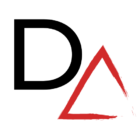COVID-19 Lockdowns Test Companies’ Preparedness
COVID-19 lockdowns across the world have forced millions to work from home, challenging companies to confront employee productivity. But many firms lack the knowhow, tools and policies to manage productivity effectively.
Why it matters
Despite the global disruption, companies need to ensure employees continue to perform up to expectations. “Companies have been scrambling,” relates Brad Miller, CEO of surveillance-software maker InterGuard.
As companies move to address employee performance, however, caution is warranted. Efforts to monitor employees can raise privacy issues and become a litmus test for company values. The use of productivity and surveillance software can quickly spawn employee mistrust.
Critically, the remote working trend isn’t likely to go away with the fading of the pandemic. Most managers agree that even when we do return to the office, there will be a new opportunity to work from home.
Productivity: A knee-jerk reaction?
Facing potentially lengthy shutdowns, firms needed to take immediate action. But a lack of preparation has complicated the response.
Companies now are challenged more than ever to monitor and measure employee productivity. Left with little choice and even less time, they have moved quickly to address productivity and collaboration concerns with software.
“Many employers are investing in surveillance software for remote workers as something of a knee-jerk reaction,” said John Moss, CEO of English Blinds. “They are unsure how otherwise to ensure that workers are performing their full hours and that they are working on what they should be during this time.”
Even before the pandemic, more than 50% of large corporations were using some type of nontraditional monitoring techniques, according to Gartner, which forecast a year ago that 80% of companies would be monitoring employees using a range of tools and data sources by this year.
Risk of employee backlash
While it is imperative that companies address the productivity of their newly remote workforces, the software intrusion risks an employee backlash.
A recent example comes from Axos Financial chief executive Gregory Garrabrants. In a March 16 email to employees, reviewed by Bloomberg, he announced the introduction of employee monitoring software to capture keystrokes, log recently visited websites, and take periodic screenshots. His reasoning: “We have seen individuals taking unfair advantage of flexible work arrangements.” The email ended with threatened disciplinary actions – including termination.
One Axos employee offered this tepid response on Glassdoor: “Management does not always show full trust in its employees.”
Mac Quartarone, director, assessment practice, at BTS and an industrial/organizational psychologist, notes that employees’ response to monitoring programs often depends on the organizational trust the company has built up with them. “If you have a lot of trust, then you probably expect that the organization is just trying to do the right thing,” Quartarone told technology news site Recode. “If you don’t have a lot of trust, then you’re going to assume that they’re trying to fire you or trying to find people that they need to fire.”
In addition, without transparency from management on expectations, including milestones and deadlines, companies are at risk of mistaking activity for results and employees may view productivity software as “Big Brother” surveillance. “Managers think that because an employee is sitting in front of his laptop, they will be more productive,” said Khalid Belghiti, founder of Scrypt.
Tipping work-life balance the wrong way
With face-to-face meetings no longer an option, companies have had to find new ways to collaborate, and video conferencing platforms have quickly become the new tool of choice. But perhaps no technology since the smart phone better represents the threat to work-life balance.
Zoom, for example, has exploded, from 10 million to 300 million meeting participants a day. According to the platform, it has seen a 700% increase in weekday evening meetings since February and a 2,000% increase in meetings on weekends. “While users have flocked to the service and social Zoom calls are now du jour, the numbers could also hint at an overburdened work force pushing meetings to out-of-hours when kids have gone to bed,” wrote Ian Sherr in a recent CNET article.
Working from home can be a blessing and a curse. The flexibility may allow you to help your children with their homework, but it also means you can work longer hours.
“Some may argue that employers are taking unfair advantage of employees,” says one senior manager who requested anonymity. “The No. 1 concern for working remotely is the inability to maintain work-life balance. Some employees feel they are starting their days earlier and finishing later than normal, with little to no recognition.”
Tips for a holistic response
In a remote working environment, effective performance management is more important than ever. But ensuring employee productivity – and balancing monitoring and trust – requires a holistic approach.
Employees have more autonomy, so it is incumbent on companies and managers to clearly define roles and responsibilities and how performance and success are measured.
- Set clear expectations. Clearly articulate desired objectives and outcomes for employees and explain how they align with broader company goals.
- Create objective performance metrics. Objective measures will help both managers and employees understand outcomes.
- Be transparent. Explain the motivation behind management decisions. If monitoring or task tracking is needed, the business rational should be provided. This helps build trust.
- Help managers manage. Managers need to understand how their roles should change in this environment and where their time should be spent.
- Focus on collaboration. Amid the physical isolation of quarantines, keeping your teams connected is critical. Tools such as Slack, Microsoft Teams and Google Hangouts are great ways to emphasize collaboration, and they often allow for self-reporting of outcomes.
But maintaining productivity also means some changes on employees’ part.
- Maintain a schedule. Setting clear guidelines for when to start work and when to call it a day can help maintain work-life balance. But sometimes you’ll need to extend the workday to accommodate others – remember to give that time back to yourself.
- Create a morning routine. Whatever time you decide to start your day, create a routine that prepares you for work. “A routine can be more powerful than a clock at helping you get started each day,” wrote PC Magazine’s Jill Duffy.
- Find a dedicated space and set boundaries. With everyone in the household spending their days under the same roof, it’s important to find space where you can work without (too many) distractions. Make sure everyone in the house understands the ground rules, including when they can and can’t interrupt you.
- Overcommunicate. Working remotely requires communication. Make sure supervisors, reports and anyone else who needs to know is aware of your schedule and the status of your projects at all times.
The Bottom Line
COVID-19 has left little unchanged about business as usual. To survive, companies must adapt to the new normal, including a remote workforce. But enabling employees to work from home requires employees and employers both to adjust to a new reality.
While technology can help close some of the gaps, it also can alienate employees. Managing performance in a work-from-home environment requires open dialog with employees and setting clear expectations.
Sources:
“Bosses Panic-Buy Spy Software to Keep Tabs on Remote Workers,” Bloomberg.
“Why Employers Are Tracking Remote Workers With Surveillance Software,” CMS Wire.
“The Future of Employee Monitoring,” Gartner.
“20 Tips for Working From Home,” PC Magazine.

